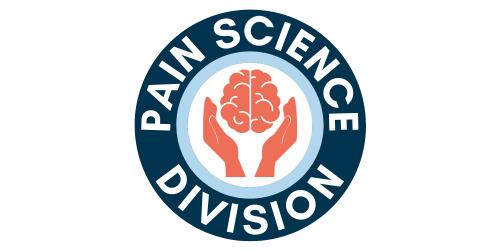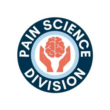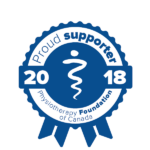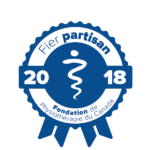A Discussion with Virginia McIntyre

Nathan: Could start by providing us with a brief background about yourself?
Virginia: I am the President of the People in Pain Network (PIPN), which is a network that provides peer support to people living with pain. I organize our facilitators training, schedule speakers and am a peer leader of several groups . I am also a pain advisor with several research groups and committees. More recently, I have started the development of the very first Person With Lived Experience (PWLE) within the Canadian Pain Society – I have presented at local, national, and international conferences, community talks and wherever I could raise awareness about pain. I am part of a provincial working group trying to implement a pain strategy for Nova Scotia.
Nathan: Could you describe your overall contribution to pain management advocacy?
Virginia: A lot of it really is sharing your story, sharing what has worked, what has not worked, what quality pain management looks like, what gaps there are in the provincial healthcare system. Personally, I do a lot of it through presentations and talks. But a lot of it can also happen when working with research committees. Sharing your experience can inform and sometimes even change the direction of research. Having the perspective of people who are living with pain, who have been through the system, who have experienced what works and what does not work is essential. I am also advocating for pain management through peer support groups, where our role is to extend the quality care that people have received, keep the momentum going and support each other through education. These groups also help to provide practical ways to use evidence and research, how to make this work in our lives.
Nathan: It sounds like there are two pillars. Sharing your experience as someone living with pain through your involvement with research, events, and policies. And then, sharing practical information to extend the continuum of care outside of the clinic, through the PIPN. Can you tell us a bit more about your input as a research team member?
Virginia: It depends on the research project, but it is mostly about highlighting where the needs are from the perspective of someone living with pain. Having the voice of people living with pain is also essential to make research more personal, to put real experiences behind the statistics, to understand the value or importance of the project. Sharing what happens when you have access to quality care, why that need should be addressed, what works and what does not will help produce research that can actually help people. Because it’s hard to understand what is missing or what needs to be addressed when you have not lived through it.
Nathan: What about peer support, can you tell us more about its importance in pain management advocacy?
Virginia: The role of peer support is to educate and support. A lot of people living with pain feel isolated, they often don’t get out of the house. Through their journeys, some have lost friendships and family. So just having those connections and this support is huge. You can just have a bunch of strangers sitting there, chatting, and laughing. And they are not always talking about pain, just chatting. As for the education part, we really try to balance evidence-based information with practical strategies. We discuss how things work and could be integrated in our lives. It is also an opportunity for members to ask questions. What is nice, is that group members have ownership over the content of these information sessions. They can identify topics that interest them and schedule a talk about it. This sense of ownership, realizing that it is their group, is really important for them. The shared lived experience really extends traditional care, it provides them with a deep sense of acceptance. I really think that there should be more peer support groups out there that provide a balance of education and support.
Nathan: How did you end up as an advocate for pain management?
Virginia: When I first developed chronic pain, I didn’t share that with anybody because there is such a huge stigma. It took me almost 10 years before I shared with someone that I had chronic pain. I went to the Canadian Pain Society Conference and attended an afternoon for people with lived experiences where they shared their stories. And I thought, all right. I just started coming out. I have been volunteering with the Canadian Osteoporosis Patient Network for years, and I let them know after going there that I live with pain. They did not know and asked if I would write an article. So that was the first article I wrote, and it was the first time I shared my experience on paper. From there, it just evolved. I talked to our pain clinic here and I said, you know, I think I want to help. We do not have a peer support group, so I started one. Coincidentally, there was a half-day meeting for physiotherapists about pain management. I asked the organizer if I could open the meeting. I took a deep breath and started sharing that I live with chronic pain and thanked them for being there. And from there, once you kind of put the words out there, it then starts flowing more and more. The peer support group just took off like that.
Nathan: By sharing your story, it opened new opportunities to become involved and help more people.
Virginia: Absolutely. From the start, my desire was to ensure that other people would not have to endure the journey that I had to endure in order to find care. Nobody should go through what I went through. I was really lucky that our pain clinic really embraced having a peer support group. They offered us a venue and helped get us off the ground. From there, I started to connect with new people, I started growing a network by introducing myself and saying this is what we do, this is what we need.
Nathan: How can we help, as physiotherapists interested in pain management?
Virginia: By presenting to local peer support groups, by providing support, by doing research and getting people with lived experience. More importantly, by listening. Listening to the voice of people living with pain. Making sure they have a seat at the table, a say in the process and feel welcome and accepted. And asking this question: how can we help?
Nathan: Any closing words that you want to share with us?
Virginia: Collaboration and working together is essential for pain management. Collaborating is a multiplication, not a subtraction. Working together makes us stronger.



